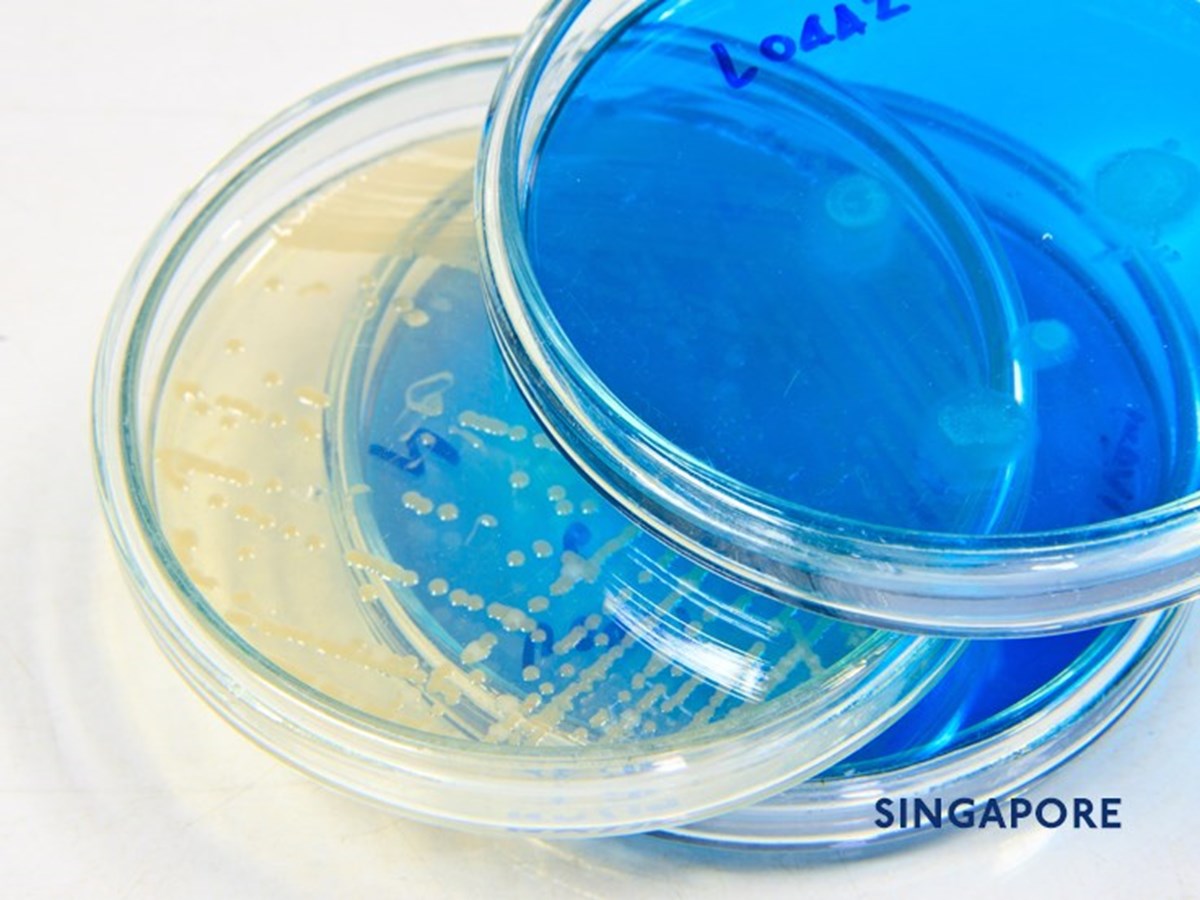
MOM updates advisory on requirements for safe management measures at the workplace to minimise risk of Covid-19 re-emergence

On 1 June 2020, the Ministry of Manpower (“MOM”) issued an updated advisory on “Requirements for safe management measures at the workplace” (“Advisory”), which was first issued on 9 May 2020 by the Tripartite Partners, comprising MOM, the National Trades Union Congress (“NTUC”) and the Singapore National Employers Federation (“SNEF”). Prior to the 1 June 2020 update, the Advisory was last updated on 29 May 2020.
With the circuit breaker having ended on 1 June 2020, Singapore will embark on a three-phased approach to resume activities safely. The Advisory provides details on the safe management measures that employers allowed to resume operations will need to implement to minimise the risk of widespread re-emergence of Covid-19 in the community and to help avoid the need to restore tight restrictive measures subsequently.
The requirements for the safe management measures set out in the Advisory are meant for general workplace settings. Specific workplaces may have to fulfil additional requirements set by the relevant agencies, e.g. construction worksites and retail and food and beverage establishments. Agencies including MOM, the Building and Construction Authority (BCA) and Enterprise Singapore (ESG) will step up enforcement and take action against errant employers, including issuing stop-work orders and financial penalties.
As set out in the Advisory, employers should take care of the following three aspects to ensure Covid-safe workplaces:
- Workers;
- Workplaces; and
- Those who may become unwell at workplaces.
This article provides an overview of the safe management measures set out in the Advisory.
1. Take care of workers
Actively enable employees to work from home
Employers should actively enable employees to work from home. Working from home must be the default mode of working (including companies resuming operations in Phases One and Two). Employees who have been working from home so far must continue to do so and should go to the office only where there is no alternative.
Employers should review work processes for employees who are unable to work from home and provide the necessary IT equipment to employees. Employers should adopt solutions that enable remote working and online collaboration. The Advisory encourages employers to leverage technology to ensure business continuity and safe management. Annex A of the Advisory provides a list of resources such as technology solutions and grants available to assist companies.
Physical meetings must be minimised (e.g. by using tele-conferencing facilities) and all events or activities that involve close and prolonged contact amongst participants (e.g. conferences, seminars and exhibitions) must be cancelled or deferred.
Special attention should be paid to vulnerable employees (e.g. older employees, pregnant employees and employees who have underlying medical conditions) to enable them to work from home, including temporary redeployment to other roles within the company.
Measures for jobs or functions where employees cannot work from home
For job roles or functions where employees cannot work from home, such as front line operations, manufacturing production, and fieldwork at construction sites, shipyards or plants, the Advisory sets out the precautions employers must put in place before resuming operations. These include:
- Implement staggered work and break hours: Employers should implement staggered work and break hours to reduce possible congregation of employees at common spaces. Some precautions include:
- Staggered work hours: Staggered work hours, to be implemented over at least three one-hourly blocks, with no more than half of the employees reporting to work within each block.
- Staggered breaks: Staggered timings for lunch and other breaks.
- Enable employees to avoid peak-hour travel: Work hours should enable more employees to avoid peak-hour travel, especially if employees require the use of public transport.
If it is not feasible to implement staggered work and break hours due to operational reasons (e.g. manufacturing production line activities), employers must implement other systems to reduce congregation of employees at common spaces, such as arranging for different groups of employees to arrive/depart through different entrances/exits.
- Implement shift or split team arrangements: For suitable workplace settings, employers must split employees at workplace premises into teams, each team restricted to one worksite wherever possible. No employee should work in more than one team or worksite. The Advisory sets out the following measures employers must take:
- No cross-deployment or interaction between shifts/teams: Employees in different shifts, teams or worksites should not have any cross-deployment or interaction between them, even outside of work. Employers must ensure clear separation of employees on different shifts or split teams, for example by implementing human traffic management measures and stepping up cleaning of common areas during shift or split team changeovers.
- Take additional safeguards if cross-deployment cannot be avoided: If cross-deployment cannot be avoided (e.g. due to the nature of the job), additional safeguards must be taken to minimise the risk of cross infection, such as putting systems in place to ensure no direct contact with cross-deployed personnel.
Minimise socialising between employees
Employers must cancel or defer all social gatherings (e.g. birthday celebrations and team bonding activities) and ensure that employees do not socialise or congregate in groups at the workplace, including during meals or breaks, such as at common spaces (i.e. staff canteens, pantries, water coolers/vending machines and smoking corners).
Employers should not organise social gatherings outside the workplace and should remind employees not to socialise outside the workplace, both during and outside working hours, including with colleagues from separate teams/shifts/worksites.
Wear masks and other necessary personal protective equipment at the workplace at all times
At general office workplaces, employers must ensure that all onsite personnel, including employees, visitors, suppliers and contractors, wear a mask at all times except during activities that require masks to be removed. For other workplace settings, onsite personnel should wear other necessary personal protective equipment, subject to sector-specific guidelines issued by the relevant agencies.
Employers must ensure it has sufficient masks for all employees, including any need to replace masks due to workplace conditions (e.g. humidity). Where possible, employers should consider improving the working environment to enable employees to sustain wearing masks.
Observe good personal hygiene
Employers should encourage their employees to observe good personal hygiene, e.g. wash their hands regularly and refrain from touching their face.
2. Take care of workplace
Control access at workplace
Employers should control access at the workplace to only essential employees and authorised visitors. Employers must use the SafeEntry visitor management system to record the entry of all personnel (including employees and visitors) entering the workplace. All employees and visitors should check-in and check-out of workplaces using SafeEntry to help the Ministry of Heath (“MOH”) in establishing potential transmission chains.
Employers should refuse entry to personnel who are unwell (including having a fever upon temperature screening) to the workplace. Visitors who are unwell must be asked to reschedule their appointments and return another day when they are well, or be served via alternate means, such as tele-conferencing.
To be allowed to enter any premises, employees and visitors must declare via SafeEntry or other means (e.g. electronic or hard copy records) that they:
- are currently not under a quarantine order or stay-home notice;
- have not had close contact with a confirmed Covid-19 case in the past 14 days; and
- do not have any fever or flu-like symptoms.
Adhere to travel advisories
Employers should ensure that their employees adhere to MOH’s prevailing travel advisory.
Take precautions to ensure clear physical spacing of at least one metre between persons at all times
Where physical interaction cannot be avoided, employers should take precautions to ensure clear physical spacing of at least one metre between persons at all times through the following measures:
- Demarcate safe physical distances: Employers must demarcate safe physical distances (at least one metre apart) at workplace premises with visual indicators or through physical means (e.g. barriers between workstations, relocation of workstations and meeting room seats). This also applies to common spaces (e.g. entrances/exits, lifts, pantries/canteens and meeting room areas), where congregation or queuing of employees or visitors/clients might occur, where reasonably practicable.
- Limit attendees and shorten physical-meeting durations: If there is a critical need for physical meetings to proceed, employers should limit the number of attendees and shorten their duration.
- Require suppliers/contractors to implement safe distancing measures: Employers who are service buyers should also require their suppliers/contractors to implement similar safe distancing measures, so that operations and business interactions with these suppliers/contractors are kept safe. Where physical interactions are still necessary, e.g. delivery of goods, employers must adopt precautionary measures such as scheduling delivery times by different suppliers in a staggered manner. Employers should keep the durations of such transactions as short as possible.
The Advisory states that appropriate technology (e.g. CCTVs, video analytics) can aid the monitoring and enforcement of safe distancing where possible.
Minimise need for physical touchpoints
Employers should reduce the occurrences of, or need for common physical touchpoints in the workplace where possible (e.g. deployment of contactless access controls). Where physical contact is needed, employers must take additional safeguards to minimise the risk of cross infection (e.g. frequent disinfection of touchpoints).
Step up cleaning of workplace premises
The Advisory sets out the following measures employers must take in stepping up the cleaning of workplace premises:
- Regular cleaning of common spaces: Employers must ensure regular cleaning of common spaces, particularly areas with high human contact. Such common spaces include counters where customers are served, rooms where visitors are hosted as well as general public access areas such as lifts, pantries, toilets, and bin areas (including bin centres where necessary). Where physical meetings are held or meals are taken at common spaces such as pantries or canteens, employers must clean and disinfect tables between each meeting or seating.
- Clean shared machinery and equipment across shifts/teams before changing hands: Employers must ensure that machinery and equipment shared between different employees across different shifts or alternate teams are cleaned and disinfected before changing hands. National Environmental Agency (NEA) sanitation and hygiene advisories must be adhered to.
Provide cleaning and disinfecting agents at specified areas
Employers should provide cleaning and disinfecting agents at the following areas:
- Cleaning agents at toilets and hand-wash stations: Cleaning agents (e.g. liquid soap, toilet paper) must be available at all toilets and hand-wash stations.
- Disinfecting agents at human traffic stoppage points: Disinfecting agents (e.g. hand sanitisers) must be installed at all human traffic stoppage points within the workplace, e.g. entrances, reception areas, security booths and lift lobbies.
- Disinfecting agents at common spaces such as meeting rooms, pantries and canteens: Disinfecting agents (e.g. disinfectant sprays, paper towels and wipes) must be provided at meeting rooms and other common spaces such as pantries or canteens.
3. Take care of workers who become unwell at workplace
Ensure regular checks for temperature and respiratory symptoms for onsite employees and visitors
Employers should ensure regular checks for temperature and respiratory symptoms for all onsite employees and visitors, twice daily or where relevant. Employers must be able to demonstrate that these checks are in place during inspections.
Record proximity data on phones
Employers should encourage all employees to download and activate the TraceTogether app to help MOH to more quickly identify potential close contacts of Covid-19 patients and reduce disease transmission.
Actively monitor unwell employees and guard against incipient outbreaks
Employers should actively monitor unwell employees and guard against incipient outbreaks. The Advisory sets out the following measures:
- Employees who have visited a clinic to submit medical records to employer: Employees at the workplace who have visited a clinic must submit to their employers records of their Medical Certificates (“MCs”) and diagnosis provided (only for Covid-19-related symptoms, including acute respiratory infections), and if they were tested for Covid-19 and the results of their tests.
- Employers to take preventive action: Employers must take preventive action to guard against incipient outbreaks at the workplace, such as requiring these employees on MCs to closely monitor their health before returning to the workplace and requiring these employees’ close contacts at the workplace to monitor their health more regularly.
Where possible, employers must ensure that each employee visits only one clinic for check-ups if unwell. Otherwise, employees should inform the clinic of all recent doctor visits over the past 14 days for any symptoms that may be related to Covid-19, such as fever, cough or shortness of breath.
Manage unwell cases
Employers must prepare an evacuation plan for unwell or suspected cases, as well as for other onsite personnel. The Advisory sets out the following two situations:
- Unwell employees to report to employer, leave workplace and consult doctor immediately: Any employee who is feeling unwell or showing symptoms of illness should report to his employer, leave the workplace and consult a doctor immediately, even if symptoms appear mild. Employers must track and record these cases.
- Immediate aid for incapacitated or unconscious individuals: For individuals who are incapacitated or unconscious, employers must clear the area of other personnel and administer aid immediately. Employers should call 995 for an emergency ambulance to ferry such individuals to the nearest hospital.
Manage confirmed cases
A follow-up plan must be put in place in the event of a confirmed case. The Advisory sets out the following precautionary measures that employers must adopt upon being notified of a confirmed case:
- Immediately vacate and cordon-off immediate section of workplace premises of confirmed case: The immediate section of the workplace premises where the confirmed case worked should be vacated and cordoned-off immediately. There is no need to vacate the building or the whole floor if there had been no sustained and close contact with the confirmed case.
- Thorough cleaning and disinfecting: Carry out a thorough cleaning and disinfection of all relevant on-site areas and assets that were exposed to confirmed cases, in accordance with NEA guidelines.
For worksites with confirmed cases, businesses could be suspended on public health grounds.
4. Implement a system of safe management measures
Employers must establish a system to implement the above safe management measures to provide a safe working environment and minimise risks of Covid-19 outbreaks. The Advisory sets out the following measures to establish such a system, which must be implemented in a sustainable manner for as long as necessary:
- Monitoring plan: Implement a detailed monitoring plan to ensure compliance with safe management measures and ensure that issues are resolved in a timely manner (e.g. follow-up on non-compliance and risk mitigation efforts).
- Safe Management Officers: Appoint Safe Management Officers (“SMO”) to assist in the implementation, coordination and monitoring of the system of safe management measures at the workplace. For unionised companies, union leaders or Workplace Safety and Health (WSH) officers could be appointed as SMOs. Employers must provide appointed SMOs with adequate instruction, information and supervision as is necessary for them to fulfil their required duties. SMOs are strongly encouraged by the Advisory to receive training. The duties of SMOs include:
- Coordinate implementation of safe management measures: SMOs are to coordinate implementation of safe management measures, including identifying relevant risks, recommending and assisting in implementing measures to mitigate the risks, and communicating the measures to all personnel working in the workplace.
- Conduct inspections and checks: SMOs are to conduct inspections and checks, to ensure compliance at all times, and to report and document any non-compliance found during inspections.
- Remedy non-compliance through immediate action: SMOs are to remedy non-compliance found during inspections and checks through immediate action.
- Keep records of inspections, checks and correction actions: SMOs are to keep records of inspections, checks and correction actions, to be made available upon request by a Government inspector.
5. Implementation and communication with employees
Employers must ensure that the measures detailed in the Advisory are in place, communicated and explained to employees prior to resuming work. Annex B of the Advisory sets out a checklist of safe management measures that should be in place for the resumption of business activities. Employers should put up signs to remind employees and visitors to observe the measures that are put in place. Unionised companies should engage their unions on such arrangements.
Reference materials
The following materials are available on the MOM website www.mom.gov.sg:
- MOM Advisory: Requirements for Safe Management Measures at the workplace
- Annex A – Resources to assist companies
- Annex B – Checklist of Safe Management Measures at the workplace for resumption of business activities
Further information
Allen & Gledhill has a Covid-19 Resource Centre on our website www.allenandgledhill.com that contains knowhow and materials on legal and regulatory aspects of the Covid-19 crisis.
In addition, we have a cross-disciplinary Covid-19 Legal Task Force consisting of Partners across various practice areas to provide rapid assistance. Should you have any queries, please do not hesitate to get in touch with us at covid19taskforce@allenandgledhill.com.

